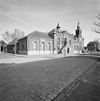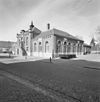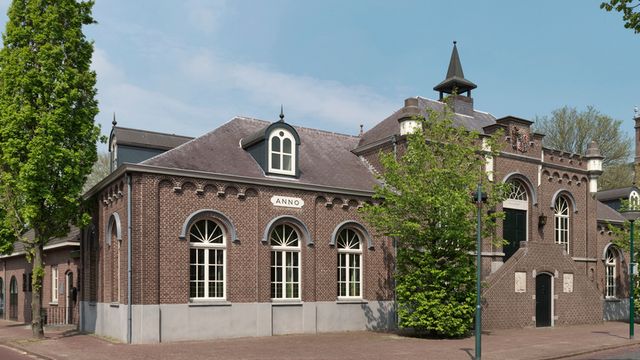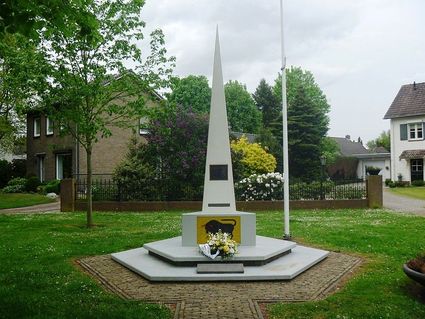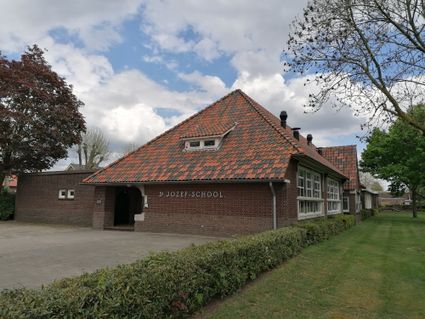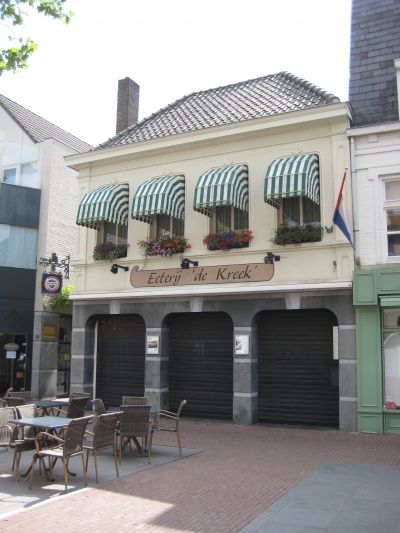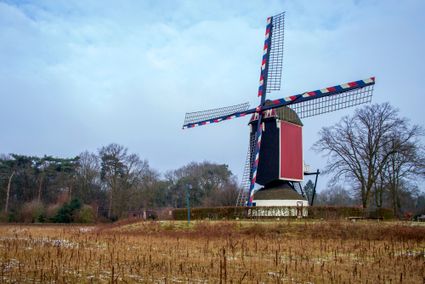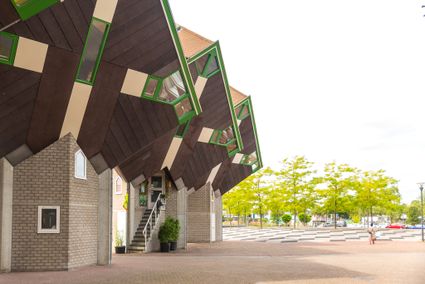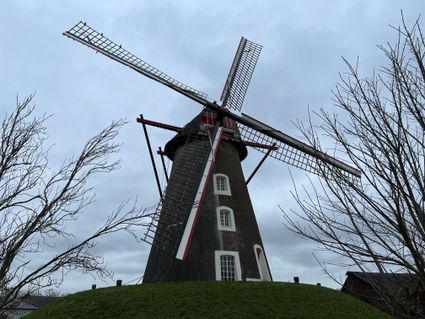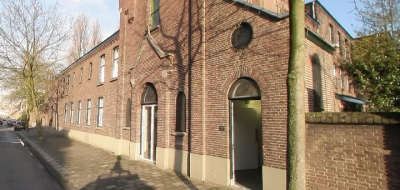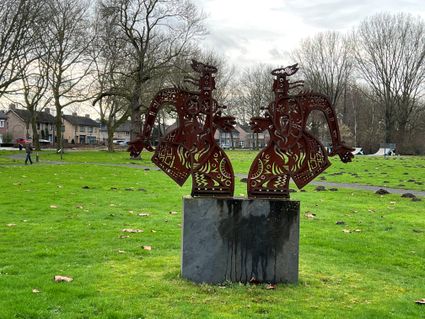Aarle-Rixtel Town Hall
In 1923, a council chamber was built above the school. Today, the entire building is in use as a town hall. On the inside, various renovations were carried out in 1940 and 1960, and the building was extended at the back in 1982. This last extension is not protected.
The building is located on the Dorpsstraat, in the centre of Aarle-Rixtel.
The building has a composite building mass. On the street is a two-storey section on …
In 1923, a council chamber was built above the school. Today, the entire building is in use as a town hall. On the inside, various renovations were carried out in 1940 and 1960, and the building was extended at the back in 1982. This last extension is not protected.
The building is located on the Dorpsstraat, in the centre of Aarle-Rixtel.
The building has a composite building mass. On the street is a two-storey section on a rectangular floor plan under a hipped roof. The ridge runs parallel to the street and is equipped with a roof ridge with a bell and a spire. The façade has three wide bays and a centralrisal with a stepped gable. The façade on either side is decorated with an edge of battlements above an arched frieze with corner turrets. To the left and right of this building mass, single-storey sections extend on a rectangular ground plan. Both buildings have hipped roofs with ridges at right angles to the street. Later extensions were built in the continuation of these building masses. On the left side of the building is a one-storey section under a gable roof, covered with tuiles-du-Nord, on the right side extends a one-storey wing under a hipped roof. Here, a block-shaped portico is set in the middle of the façade. Behind the main mass, a higher building mass on a rectangular ground plan with a hipped roof has been placed parallel to that of the main mass. At the front, there is a double natural stone staircase with a platform and a brick balustrade. This addition dates from around 1935. The balustrade contains a wooden arched door on the ground floor. On either side of this, natural stone bricks have been placed. The entire building is made of brick, with lintels and an arched frieze. Plastered fields show the inscription "ANNO" and "MDCCCLV (1855)". The roofs are covered with slates. The skylights of the windows and door are placed under plastered eyebrow arches. The door is located in the centralrisaliet, the upperlight has a fan-shaped rod distribution. The windows have a small, fan-shaped light distribution. In the basement, on both sides of the steps, there are arched windows with thief bars. The windows of the elongated extension to the right of the main building have straight fanlights, which are also divided by angled rods. In the left addition, there are wooden doors and six-pane windows. Above the door, a statue of a saint is placed in a niche. The top of the gable is decorated with a polychrome coat of arms.
The building is of general importance. It is of cultural-historical importance as an example of an administrative and educational development. It is of architectural-historical importance because of its design with castle-like elements and the place it takes in the oeuvre of architect Van Tulder. It is also important because of its complicated construction history, the materialisation of the function changes the building has undergone. It has ensemble values in relation to the church, the presbytery and the H. Har statue. It has been preserved intact.
Now there is a company in this building.

